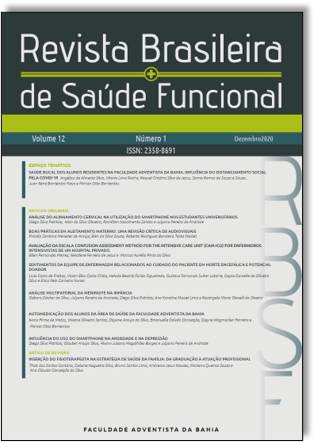MULTIFACTORIAL ANALYSIS OF MENINGITIS IN CHILDHOOD
DOI:
https://doi.org/10.25194/rebrasf.v8i3.1288Abstract
Introduction: The central nervous system is surrounded by membranes called meninges, when there is inflammation of these membranes we have the so-called meningitis. It is known that the main related causes are of viral and bacterial origin. Objective: To evaluate the rates of hospitalizations and deaths from meningitis in the pediatric population in the last five years, as well as the main causes in childhood and the most frequent sequelae found. Methodology: This is a secondary and transversal study through the analysis of data from the Hospital Information System of the Unified Health System (SIH / SUS), from the Ministry of Health, through the website of the SUS Computer Department for the period of the last five years. Results: The rates of hospitalizations for meningitis in the pediatric age group were 57.24% of the total value of hospitalizations for this reason. The bacterial cause was responsible for 75.5% of deaths in the pediatric population, the viral cause for 21.1% and other non-specific causes or causes for 3.4%. The main sequelae can be highlighted: focal neurological deficits, hearing loss, cognitive impairment and epilepsy. Discussion: The prevalence of cases of hospitalization for meningitis showed a higher percentage among the age groups of individuals under one year of age and between one and four years. However, despite the higher incidence of hospitalizations in the pediatric population, the patient's age at the time of diagnosis was not associated with higher mortality. Conclusion: Meningitis, despite technological advances with the implementation of the vaccine, still has a high incidence in the pediatric population, with a bacterial etiology with a worse prognosis.


